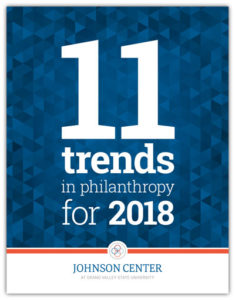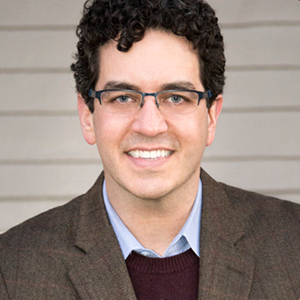A Growing Commitment to Building Nonprofit Capacity


Download and read the full report, featuring all 11 trends, here.
 There is a rising call across the sector for greater attention to and investment in nonprofit capacity with an aim towards achieving greater impact. In 2016, 22 leading field-building organizations released a public call for foundations to direct “at least one percent of their grantmaking budgets to support the infrastructure upon which the nonprofit sector is built” (Investing in Infrastructure, 2016). While the pace of change has not been as rapid as many would hope, the sector is responding to this call. Driving this trend is a desire for a more diverse and inclusive sector, the need for increased professionalization, and an overall eagerness to create more understanding around the true costs of nonprofit work.
There is a rising call across the sector for greater attention to and investment in nonprofit capacity with an aim towards achieving greater impact. In 2016, 22 leading field-building organizations released a public call for foundations to direct “at least one percent of their grantmaking budgets to support the infrastructure upon which the nonprofit sector is built” (Investing in Infrastructure, 2016). While the pace of change has not been as rapid as many would hope, the sector is responding to this call. Driving this trend is a desire for a more diverse and inclusive sector, the need for increased professionalization, and an overall eagerness to create more understanding around the true costs of nonprofit work.
More funders are now including capacity building as a budget line within grants they make in the regular course of their program funding. The Foundation Center’s online directory includes over 2,600 foundations that have some mention of capacity building in their profiles (Foundation Directory Online, 2017) and Grantmakers for Effective Organizations (GEO) has reported that 77 percent of funders they surveyed provide some capacity building support (GEO, 2015). Still, a recent study of capacity building grants commissioned by the Hewlett Foundation has revealed that, while philanthropy is growing overall, funding for capacity building is not keeping pace (Louie, 2015).
Beyond funding patterns, other indicators show a rising sector-wide interest in capacity building. Several vibrant new organizations are emerging with the express purpose of promoting talent and capacity support, such as the Aspen Institute’s new program on nonprofit capacity, and Fund the People (formerly the Talent Philanthropy Project), which was launched in 2014 to maximize philanthropic investment in the nonprofit workforce.
We are also seeing new scholarship on capacity building in philanthropy literature. Nancy Devine (2016), for example, compared individual and group capacity building programs and found little difference in outcomes, highlighting the opportunity to fund across approaches. And more generally, the Social Sector Accelerator recently reviewed research from nearly 60 academic, think-tank, and thought-leader sources, finding consistent support for the argument that “organizations that receive capacity building support achieve greater social impact” (Crawford, 2017).
Finally, we are seeing an increasingly robust network of capacity builders at work in the field. The Alliance for Nonprofit Management’s 2017 annual meeting drew over 100 participants to Grand Rapids, Mich. to talk about capacity building and other nonprofit management issues.
With foundations increasingly supporting this work, new organizations emerging to advocate for it, new research being produced, and a network of intermediaries stepping up to deliver it, we anticipate that capacity building and talent development will continue to grow as a field-wide priority in the coming years, a trend that can only bode well for the ultimate impact of our sector.


Crawford, T. (2017, April 7). Measuring the capacity dividend. Arlington, VA: Social Impact Accelerator. Retrieved from https://www.capacitydividend.org/news/2017/4/5/measuring-the-capacity-dividend
Devine, N. (2016). The groundwork for successful cohort- based fiscal capacity-building: An evaluation of the strengthening financial management initiative. The Foundation Review, 8(1), 40–47. Retrieved from https://scholarworks.gvsu.edu/tfr/vol8/iss1/6/
Foundation Directory Online. (2017). New York: Foundation Center. Retrieved December 1, 2017, from https://fconline.foundationcenter.org/
Grantmakers for Effective Organizations. (2015, September 15). Strengthening nonprofit capacity. Washington, DC: Author. Retrieved from https://www.geofunders.org/resources/710
Investing in Infrastructure. (2016, May 13). A letter to the field. Author. Retrieved from http://www.effectivephilanthropy.org/wp-content/uploads/2016/06/Investing-in-Infrastructure_digital.pdf
Louie, L. A. (2015, July 21). Infrastructure matters, but funding hasn’t kept pace. Menlo Park, CA: William and Flora Hewlett Foundation. Retrieved from https://www.hewlett.org/infrastructure-matters-but-funding-hasnt-kept-pace/